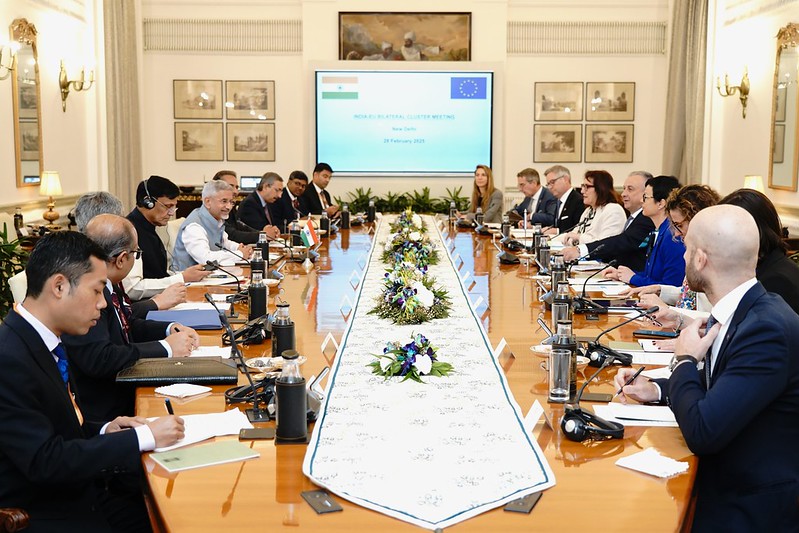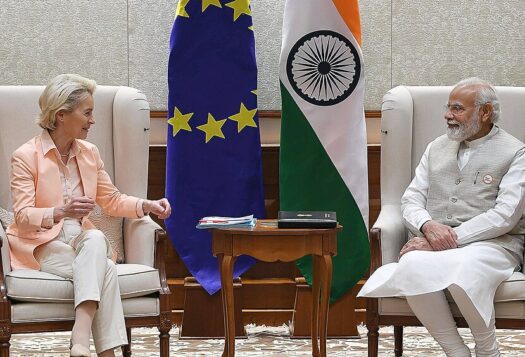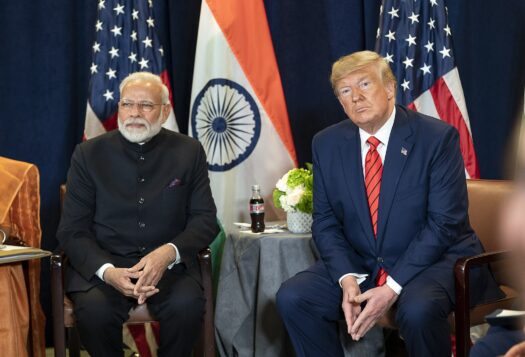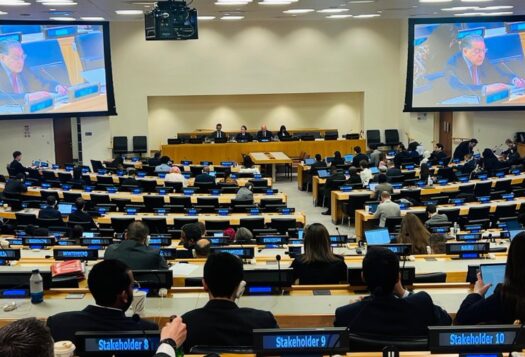
Last month, Ursula von der Leyen, President of the European Commission, and a team of European Union (EU) Commissioners was on an official visit to India. The delegation, comprising 22 out of the 27 members of the EU College of Commissioners, was unprecedented in scale and scope, with about 20 meetings taking place across different sectors. As the first foreign trip of the newly formed Commission, this was meant to be a signal from the EU of its serious commitment to bolstering the strategic partnership with India, which is up for formal renewal in 2025. Particularly following Russia’s invasion of Ukraine and the recent shocks to the transatlantic alliance due to U.S. President Donald Trump’s statements and policies, von der Leyen and the EU’s geostrategic outlook has shifted and India’s importance strengthened.
For India, the stakes are also high. The EU as a bloc is India’s largest trading partner, accounting for €124 billion (or approximately USD 133.55 billion) of trade in goods in 2023, which amounts to 12.2 percent of total Indian trade. Trade in services has almost doubled in the space of 3 years. At the same time, India is the EU’s ninth largest trading partner, accounting for only 2.2 percent of the bloc’s trade, highlighting the capacity for deeper trade relations. Indian External Affairs Minister S. Jaishankar made a similar case at the recent Raisina Dialogue, warning that in a more hostile and competitive world, trade will increasingly happen between partners and called the EU, the United Kingdom, and the United States India’s “growth markets.” “These are our technology partners. This is where people go for education. This is where people go for tourism. These are, in many ways, our connectivity partners. They are our strategic partners,” Jaishankar stressed.
With a heavy dose of realism infusing positions on both sides, the question remains: will the EU-India relationship be realigned and reimagined in 2025 and if so, how? The EU has initiated a process of realignment, specifically in terms of its collective defense and security arrangements and capabilities. This creates new opportunities not only for deepening defense ties with India, but also cooperation in sectors such as cyber security and space. However, two aspects are likely to continue generating uncertainty in this relationship: the EU’s relationship with China and India’s relationship with Russia.
As the first foreign trip of the newly formed Commission, this was meant to be a signal from the EU of its serious commitment to bolstering the strategic partnership with India, which is up for formal renewal in 2025. Particularly following Russia’s invasion of Ukraine and […] U.S. President Donald Trump’s statements and policies, von der Leyen and the EU’s geostrategic outlook has shifted and India’s importance strengthened.
Growth Areas: Defense, Space and Security
First-time EU Commissioner for Defense and Space, Andrius Kubilius, was amongst the more vocal in the delegation visiting India, stating in an interview that apart from being the “century of space,” the 21st century, will also be the “century of India.” While this can be dismissed as empty rhetoric, there is evidence for substantive engagement between the two space powers. This includes a number of recent agreements between the Indian Space Research Organization (ISRO) and the European Space Agency (ESA) to collaborate on concrete missions. The ESA has agreed to provide ground station support to all three planned missions comprising India’s first human spaceflight program, Gaganyaan. Meanwhile, India launched ESA’s Proba-3 mission to study the Sun’s corona and the outermost layer of its atmosphere. For both sides, there are commercial and strategic benefits to space cooperation, especially given their complementarities. India has more cost-effective and highly successful launching capabilities while ESA has the expertise in astronaut training, mission implementation and research experiments.
In the area of defense, India is all set to approve the purchase of 26 Rafale M fighter aircraft from France, reportedly valued at USD 7.6 billion. New Delhi is also expected to soon conclude a deal with Germany’s ThyssenKrupp Marine Systems for six submarines, estimated to cost USD 5.2 billion. Although these multi-billion-dollar deals have occurred through key bilateral relationships, as the EU ramps up its defense spending in the aftermath of the Russia-Ukraine war, there will be opportunities for Indian companies to integrate into the European supply chain. For instance, Bharat Forge, an Indian manufacturing company, has entered into a multi-party agreement with American defense companies, AM General and Mandus Group LLC, to explore co-development and co-production of next-generation artillery gun platforms. This is likely to set a precedent for similar agreements with European defense companies.
India and the EU are also reportedly discussing a security and defense partnership agreement, similar to the ones the EU already has with Japan and South Korea. There have already been discussions to enable India to join projects under the Permanent Structured Cooperation (PESCO) framework. Launched in 2017, the treaty-based framework enables member states to develop collaborative capability and enhance the operational readiness of the armed forces. PESCO has been criticized for lacking cohesion but is regarded as key to the EU’s current efforts to develop a more credible defense union. Inviting a third state to participate requires a Security of Information Agreement, to govern the exchange of any classified information. In the case of India, the intent to start negotiations on such an agreement was specifically mentioned, perhaps for the first time, in the leaders’ statement post the EU delegation visit to India.

On maritime security, India and the EU have very gradually moved towards joint naval exercises, as part of the EU’s Strategy for Cooperation in the Indo-Pacific. The EU launched a Coordinated Maritime Presence concept for the Gulf of Guinea in 2021 and subsequently extended it to the northwestern Indian Ocean in February 2022. Joint maritime drills between the Indian Navy and the EU Naval Force have taken place in the Gulf of Aden and the Gulf of Guinea, under the umbrella of EU initiatives that seek to enhance and convey Europe’s presence and reputation as a maritime security actor. However, although the EU and India both deployed warships to the Red Sea in 2024 to safeguard shipping routes from Houthi attacks, there was no coordinated or combined operation.
Geostrategic Convergence and Complications
Despite what seems like unanimous agreement across EU member states and with support from industry, diplomats, and politicians on the need for a revamped EU-India strategic partnership, there remains a geostrategic discrepancy at the core of the relationship. For India, the relationship with Russia remains a central one and for the EU, trade with China remains critical. This could complicate EU-India geostrategic ties.
Data from a 2024 SIPRI report indicates that India has been unmistakably moving away from a Russia-centric defense procurement strategy, but the transition remains incomplete. Russian-origin platforms still constitute a significant portion of India’s military assets, necessitating continued cooperation for maintenance, spare parts, and upgrades. Aside from the lock-in effects created by the defense partnership, New Delhi also has an interest in retaining influence with Moscow to maintain leverage within the deepening Russia-China relationship. This is why India was not in alignment with the EU on sanctioning and isolating Russia post its invasion of Ukraine. Meanwhile, the EU’s call to de-risk and diversify supply chains to reduce dependence on China have also not materialized. EU-China trade remains robust with the EU being China’s largest trading partner and vice versa. While India and the EU are both driven by the need to diversify away from their current partners and have a shared interest in preserving a multi-polar world order, their sense of immediate threat comes from two very different great powers – China in the case of India and Russia in the case of Europe. This could create divergences between them on geopolitical and national security matters and could pose constraints in their ability to cooperate in future.
Despite what seems like unanimous agreement across EU member states and with support from industry, diplomats, and politicians on the need for a revamped EU-India strategic partnership, there remains a geostrategic discrepancy at the core of the relationship. For India, the relationship with Russia remains a central one and for the EU, trade with China remains critical.
The EU-India relationship has also long been scrutinized for failing to reach its potential, particularly trade-wise. Discussions for a trade deal were initiated in 2007, put on hold between 2013 and 2022 and in March 2025, entered a tenth round of negotiations. Bold statements have been made by both sides, claiming that a deal will be reached in 2025. Given that the EU and India have both recently gone on a spree of signing trade agreements, it is possible that this will happen, though analysts warn it will be a “lite” version.
Conclusion
A stronger EU-India relationship promises greater dividends for both Brussels and New Delhi. But how both sides manage the elements of uncertainty and risk in their relationship is crucial. For instance, the EU chose to deepen relations with India in 2022 despite New Delhi’s decision not to participate in the sanctions on Russia, suggesting both sides can be pragmatic and work through challenges to secure their interests.
As European politicians and diplomats scramble to find the region’s footing in a world potentially without the United States acting as the continent’s security guarantor, Delhi may once again view this as a moment where Europe’s problems are being cast as the world’s problems. However, the implications and reverberations of the Russia-Ukraine war and the breakdown of the transatlantic partnership do feel dramatic, especially given the relative peace and stability that the continent has enjoyed, and which had come to be taken for granted, since World War Two. The peace dividend of investing in social security rather than military security for its citizens is reaching its limits. For India, there are equally significant problems, such as the urgent need to grow the economy to lift more of its population out of poverty and to ensure a sustainable future for its citizens. As a leader within the Global South, India also believes it has to work toward and rally support for the global sustainable goals agenda. The extent to which the EU-India strategic relationship can contribute to addressing these two core challenges will determine its significance for New Delhi as a reimagined global partnership.
Also Read: The Compulsions and Challenges of Indian Strategic Autonomy Amid the Russia-Ukraine War
Views expressed are the author’s own and do not necessarily reflect the positions of South Asian Voices, the Stimson Center, or our supporters.
***
Image 1: MEAphotogalllery via Flickr
Image 2: EEAS Press Team
Views expressed are the author’s own and do not necessarily reflect the positions of South Asian Voices, the Stimson Center, or our supporters .


